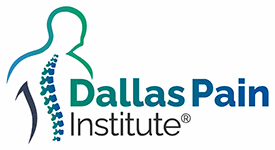Call for an appointment today! (903) 892-1999
Cervical Epidural Steroid Injection
The epidural steroid injection procedure involves introducing anti-inflammatory medication into the epidural space, aiming to reduce nerve root inflammation and consequently alleviate back or leg pain. This treatment might expedite the healing of the injury by decreasing inflammation. It can provide enduring relief or offer several months of pain respite as the injury or the underlying cause of the pain heals.
Instructions Prior to Injection: It’s crucial to alert our team if you suffer from any allergies, particularly to iodine. Patients scheduled for sedation must abstain from eating on the morning of the procedure. Insulin-dependent diabetics expecting sedation may need to adjust their morning insulin dosage, given the fasting requirement. Patients can continue taking their standard medications, such as those for high blood pressure or diabetes, like Glucophage.
On the procedure day, patients should persist in taking their normal pain or anti-inflammatory medications. Those on blood thinners like Coumadin need to inform our staff, enabling us to devise a proper plan for halting the medication pre-procedure. We generally advise that patients be accompanied by a driver to ensure their safe return home post-procedure.
Procedure for Caudal Epidural Steroid Injection: The patient is laid on their stomach for clear x-ray visibility of the spine. The skin on the back is cleaned with antibacterial soap. Subsequently, the doctor applies a numbing agent to a small skin area, which may cause a momentary stinging sensation. Once the numbing agent has taken effect, the doctor introduces a needle into the epidural space, injecting a combination of a local anesthetic and an anti-inflammatory steroid.
Post-procedure Expectations: Unless the doctor instructs otherwise, there are no restrictions on food, liquid consumption, or activity levels after the procedure. If necessary, a follow-up appointment will be scheduled for a subsequent block. Typically, these injections are administered in a series of three, spaced roughly one month apart. The back or legs may occasionally feel weak or numb for a few hours post-procedure. Patients are generally able to resume normal activities on the procedure day, although driving is advised against.
ALL TREATMENTS
Caudal Epidural Steroid Injection
Cervical Epidural Steroid Injection
Inferior Hypogastric Nerve Block
Kyphoplasty for Vertebral Fractures
Lumbar Epidural Steroid Injections
Lumbar Sympathetic Plexus (Ganglion) Block
Minimally Invasive Lumbar Decompression (MILD Procedure) for Spinal Stenosis
Radiofrequency Ablation of Facet Joints
Radiofrequency Ablation of Genicular Nerves of the Knee
Spinal Cord Stimulation Implants
Superior Hypogastric Nerve Block
Superion InterSpinous Spacer for Spinal Stenosis
Transforaminal Epidural Steroid Injection or Selective Nerve Root Block
